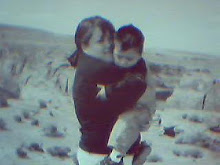
I was able to work and view a picture of a cheek cell from an online microscope. It was fairly similar to working with a real microscope by trying to focus the cell to make it viewable. The tutorial was helpful in teaching how to work the focuses and really helpful of explaining the parts of a microscope and what it’s purpose is. The checklist was very helpful just in case I missed any steps. The cheek cell is viewing in 40x magnification.

Parts of a Microscope and purpose-
1. Eyepiece/Oculars-where you look through to see the image of your sample. The eyepiece helps you determine if the sample needs focusing.
2. Nosepiece-the rotating part of the microscope at the below the eyepiece tube; it holds the objectives.
3. Objective lenses- the microscope has different focuses attached to the nosepiece. It has different magnification ranging high to low letting the viewer to see their sample as close as they want.
4. Arm- The arm is where you carry the microscope with one hand and holding the base (the bottom of the microscope) with your other hand.
5. Focus knob-the knob is usually on the side of the microscope so you can focus the sample to make it more viewable. It makes the sample move high or lower to the stage.
6. Fine adjustment knob- it controls the fine focus of the image when viewing at a higher magnification.
7. Stage- it’s a place where you put the sample under the light for viewing. The focus knobs move the stage up and down to the eyepiece for viewing.
8. Iris Diaphragm-a lever that controls the amount of light going through the opening or stage.
 What is a microscope?
What is a microscope?By definition it’s an optical instrument that uses different type of lenses to produce images of small objects to be seen closer to the undetected eye. Many scientist use the microscope to see tiny organism closer like human cells, to identify minerals and other findings and also to help solve crimes today and find the causes for certain diseases. With the microscope, scientists saw the tiny germ that causes disease/illness, so the microscope is a very important tool and discovery.
 History of the Microscope
History of the MicroscopeIt’s one of the greatest discoveries and dates back over 400 years. It was said that the first useful microscope was developed between 1590 and 1608 in the Netherlands. It’s almost impossible to know the real date of when the microscope was first discovered.
A few inventors have been credited for the microscope such as Hans Lippershey, who also developed the first telescope and his son Zacharias. It’s said that Hans was the first to make the discovery but it was his son Zacharias to continue the research. The first compound microscope was just a tube with lenses at both end and the magnification ranged from 3x to 9x. In the early 1600’s Robert Hooke improved the microscope and he was able to view a plant tissue. In the mid 1600’s Anton Van Leeuwenhoek, made the microscope lenses magnify up to 270x. He was on the first person to observe microscopic life and recorded his observations. As years went by many people are credited in improving the microscope, magnifying is even closer, making it easier to use and handle and finding even more discoveries today.

Conclusion:
The microscope is an important tool for scientific research and education. The microscope is not just for scientist trying to find cures for diseases or to find new discoveries but also for students to understand about the tiny organism and how the microscope has helped human kind, animals and our environment. People in the criminal field find the microscope useful into solving cases. Because of the microscope many cures have been found for diseases, new findings help us understand about organisms and there are always new discoveries.

No comments:
Post a Comment